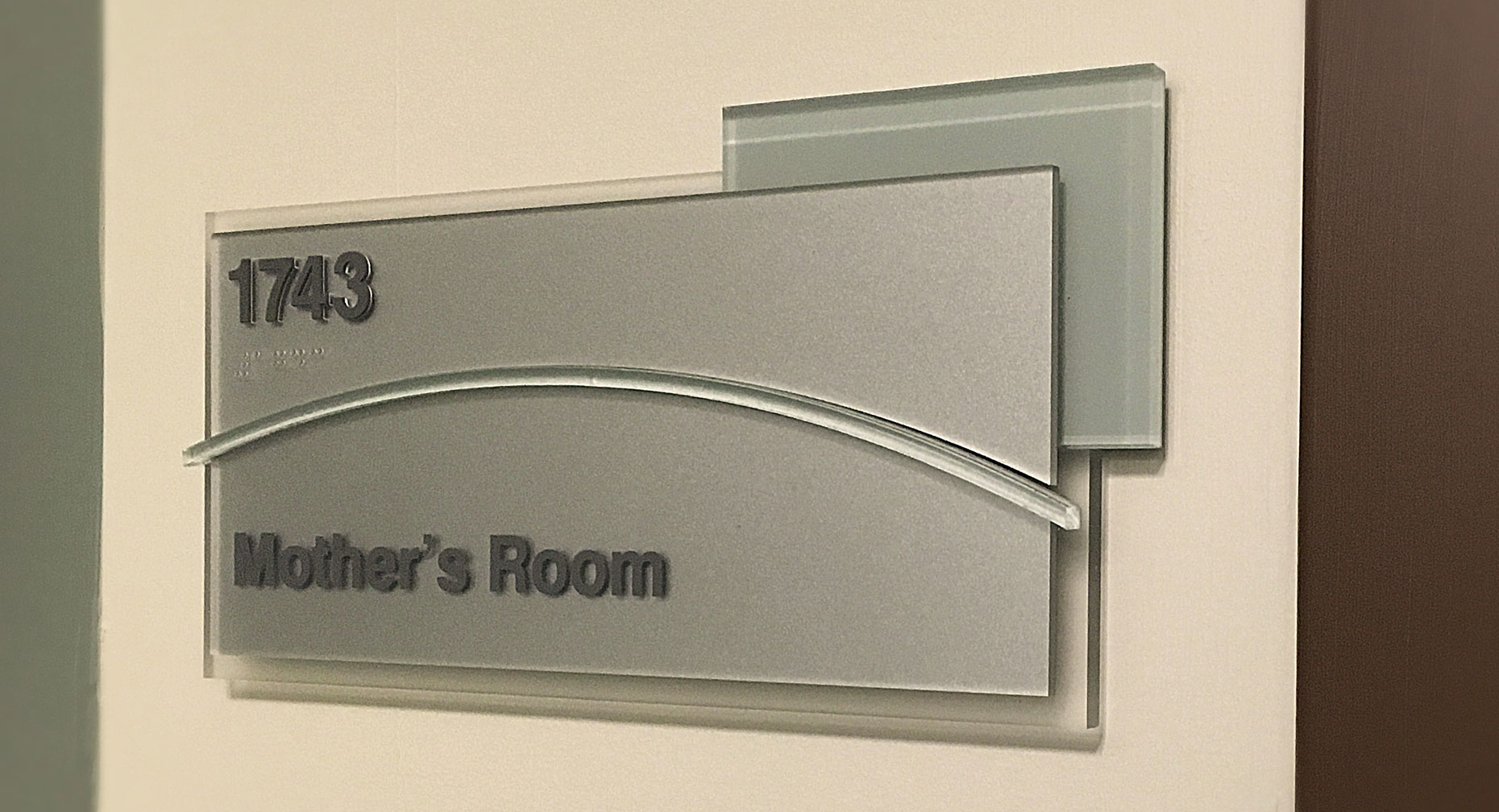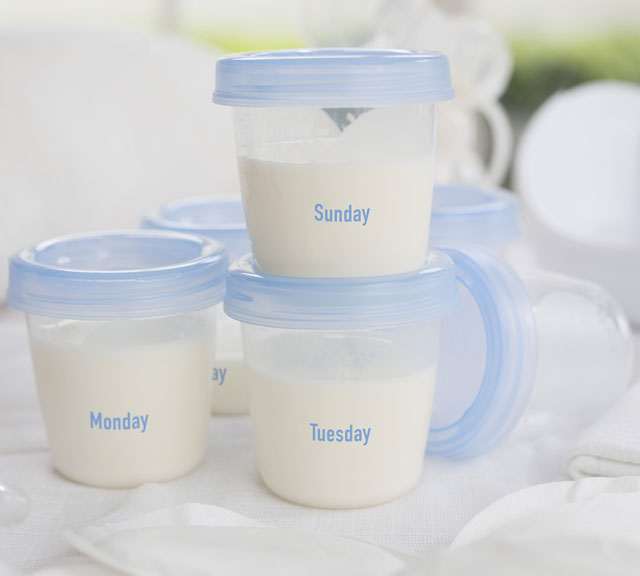6 Breastfeeding Tips for Working Moms

Find Your Perfect Match
Answer a few questions and we'll provide you with a list of primary care providers that best fit your needs.
Breastfeeding your baby has so many advantages — providing the best nutrition for your baby, staying bonded with your baby even when you’re apart, and fewer illnesses, infections, and skin irritations — that continuing to breastfeed after your maternity leave ends is a no-brainer.
Leaving your baby to return to work can tug at your heartstrings. If you’re breastfeeding, you can ease your mind about your child’s nourishment if you plan ahead, keep lines of communication open with your employer, and make yourself as informed as possible.
Here are some tips for making the adjustment easier.
1. Let Your Employer Know Your Needs in Advance
Educating your employer about your choice to make breastfeeding arrangements for your baby and about the relatively minor physical accommodations required in the workplace will encourage cooperation.
Let your employer know about the significant advantages to continuing breastfeeding once you are back to work. Breastfed babies are half as likely to get sick in the first year of life as those receiving artificial baby milks, and if your baby doesn't get sick as often, you will miss less time from work.
Keep talking with your boss about your schedule and what is or isn't working for you. Under federal law, covered employers must offer their breastfeeding employees reasonable break times to pump for up to one year after a baby’s birth and a clean place, other than a bathroom (for sanitary reasons), to safely and privately express breast milk.
If your company does not provide a dedicated private lactation room for expressing milk, identify a temporary private area you can use, such as an employee office with a door for privacy, a conference room, or a little-used storage area. You’ll need access to an electrical outlet if you’re using an electric breast pump.
2. Prepare for Your Work Return
Returning to work gradually gives you more time to adjust and helps your body make a good supply of milk. Here are options to discuss with your employer:
- Start back to work part-time for a brief period before working full-time.
- Work from home or combine working at home and at work.
- Go back to work on a Thursday or Friday or just before one to two days off, depending on your work week. This gives you and your baby a shorter period to adjust to being away from each other before you go back full-time.
- Take Wednesdays off for a few weeks for a mid-week break, and breastfeed on your baby’s schedule to rebuild your milk supply.
- Work a split shift, with a long break in the middle of the day to go home and be with your baby. This can work well for restaurant workers.
- Consider using childcare close to work so you can visit and breastfeed your baby during the day.
- When you arrive to pick up your baby from childcare, take time to breastfeed first. This gives you both time to reconnect before going home and returning to other family responsibilities.
Maria Greene, RN, BSN, IBCLC, a Premier Health lactation consultant suggests rehearsing before returning to work. “A couple of weeks before you go back, either have the sitter come over for three hours a few times a week, or take the baby to the caregiver you’ve chosen for short periods of time,” she suggests. “This gives the baby time to adjust to new people and environments, and it can also give you confidence that your baby will indeed take a bottle from the caregiver.”
3. Learn the Ins and Outs of Using a Breast Pump
A breast pump lets you extract milk by creating a seal around the nipple and areola, creating suction to the nipple. Pumping is usually delayed for three to four weeks to help you and your baby establish an adequate milk supply.
When you return to work, ideally you will pump at work as often as you would have breastfed your baby at home. Practically, however, many mothers often find that in an eight-hour workday, they pump during morning, lunch and afternoon breaks.
Since time is in such short supply, using a pump that allows access to both breasts at the same time is helpful. By double pumping, mothers keep up their level of prolactin (an important lactation hormone), and they may be able to pump in 10 to 15 minutes rather than 20 to 30 minutes. Many mothers find that double pumping three times a day during the first few months back to work gives them enough milk to leave for their caregiver for the next day. As the baby gets older and begins eating solids, you may not need to pump as frequently.
Of course, if your baby is being cared for at your workplace, pumping can be reduced or avoided since you will be able to breastfeed during your workday.
Let your employer know about the significant advantages to continuing breastfeeding once you are back to work.
About two weeks before returning to work, adjust your nursing schedule at home so you're pumping at least once each day and nursing before and after your upcoming work hours. Have someone else feed your baby a bottle of breast milk to help your baby adapt. “We often suggest mothers nurse the 5 a.m. feeding and then pump. Your breasts are often very full in the morning, and it is easy to pump both breasts after the baby finishes nursing. Pumping once daily should help you store the milk you need for returning to work. Remember, you only need enough for the first day or two back to work,” says Greene. consultant
Some mothers initially pump one breast as her baby breastfeeds at the other. This method has the benefit of double pumping, and it may interfere less with baby's breastfeeding routine. A mother's body sometimes learns to "let down" in response to the pump more easily. If you try this, alternate the breast being pumped as you increase the number of pumping sessions.
Ease your concerns by discussing questions such as “How much will my baby take from the bottle?” or “I am concerned about my supply” with a lactation consultant. A phone consult could help answer all of your questions.
4. Learn About Your Breast Pump Options
You have the choice of using either a manual breast pump or a powered breast pump (battery or electric). Check with your insurance company prior to buying or renting a pump. Most companies offer a pump as an insurance benefit.
Manual pumps are slower and less effective but aren’t dependent on a power source. If you decide to use a manual pump, purchasing is your only option (but they’re lower in cost than powered pumps). Manual pumps are useful if you plan to pump only occasionally.
Powered breast pumps only work when electricity or batteries are available. Their small motorized pump creates suction to extract milk into the container. Powered pumps are costlier but faster and more convenient. If you'll be pumping when you return to work, personal-sized power pumps are easy to cart around. Ask your hospital or lactation consultant where you can rent one.
If you plan to pump milk longer than six months, it might be more cost effective to purchase a pump. Of course you'll be able to use it with your future babies, too.
Check with your insurance company prior to buying or renting a pump. Most companies offer a pump as an insurance benefit.
Since you will be separated from your baby while you are at work, be sure to breastfeed your baby when you are home-- mornings, evenings, and weekends. It's a great way to keep tuned in and bonded to your baby. Frequent breastfeedings will also help you to maintain your supply.
5. Decide on your Work Timetable for Expressing Milk
In the first months of life, babies need to breastfeed eight to 12 times within a 24-hour period. You will need to express and store enough milk to cover those usual feeding times when you are away from your baby.
Greene indicates that every three hours is a good frequency to pump. Leaving your caregiver three bottles, each containing two to three ounces of milk, each day is a good starting amount.
At work, many women take their regular breaks and lunch period to pump. Others arrange with their supervisor to come in early and/or stay late to make up the time needed to express milk. It usually takes 15 minutes to express milk, plus time to get to and from the lactation room.
A sample timetable for expressing milk during an eight-hour work day might be at 9:30 a.m., 12:30 p.m. and 3:00 p.m., depending on your work schedule.
6. Store Your Milk Safely
Because your milk is full of antibodies that fight germs and bacteria, it can be safely stored and given to the baby later.
Breast milk is food, so it is safe to keep in an employee refrigerator or a cooler with ice packs. Discuss with your supervisor the best place for you to store your milk. If you work in a medical department, do not store milk in the same refrigerators where medical specimens are kept. Be sure to label the milk container with your name and the date you expressed the milk.
Milk can be safely stored either through refrigeration (72 hours is best; five to eight days is acceptable under very clean conditions) or by freezing (six months is best and 12 months is acceptable, depending on the freezer).
It’s Time to Allay Your Fears
Moms need time to get used to the routine of breastfeeding. Then when you return to work, you face a new learning curve about planning and preparing for being away from your baby.
Arm yourself with as much information and planning as possible, and in no time you will transition into a schedule with the least amount of stress and worry for you and your baby.
Find Your Perfect Match
Answer a few questions and we'll provide you with a list of primary care providers that best fit your needs.
Source: La Leche League International; Womenshealth.gov; Maria Greene, RN, BSN, IBCLC, Premier Health





